Rules for planting lilies in the spring in open ground
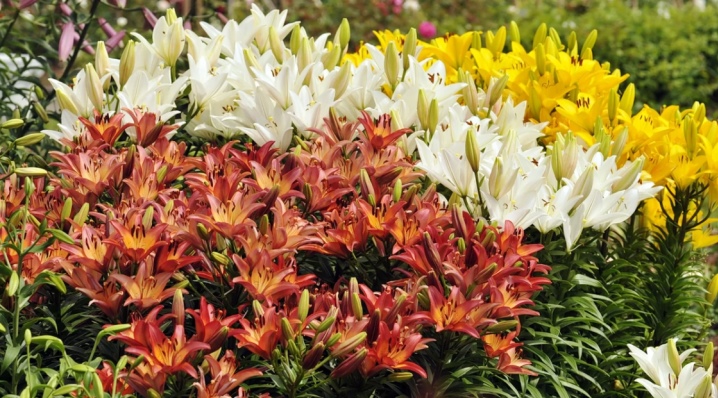
Any person can grow lilies, even if he is far from gardening. Few people know, but they can be successfully planted in spring. To do this, you just need to choose the right kind of bulbs, plant them in prepared soil and enjoy the wonderful fragrant flowers in due time. Caring for lilies is pretty simple and doesn't take a lot of time. To facilitate this process, you need to familiarize yourself with the accumulated experience and apply it in your flower bed.
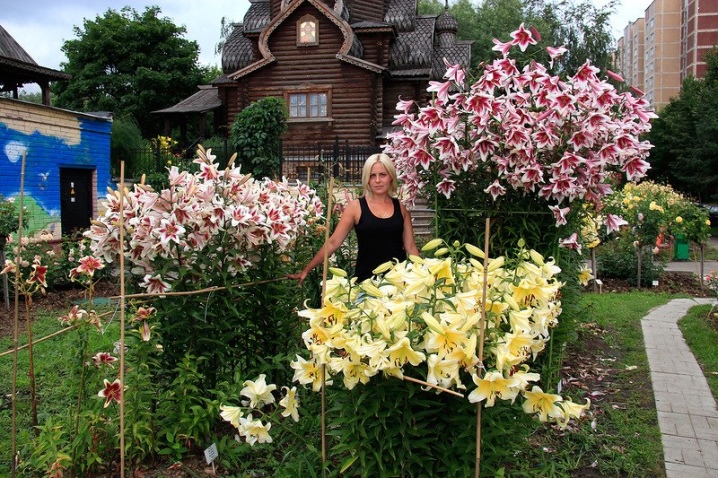
Advantages and disadvantages
Novice florists who decide to decorate their flower beds with lilies are misled by the information that planting can take place both in the spring and in the autumn. In autumn, the bulbs are planted so that they take root before the onset of cold weather. Planting in the spring is slightly different and has its own characteristics. There may be the following prerequisites for postponing planting operations in the spring:
- the reason for this may be a banal short-sightedness, not everyone harvests seeds on time, the idea of purchasing lilies can be spontaneous;
- weather conditions can also interfere with the autumn planting - early frosts or rains.
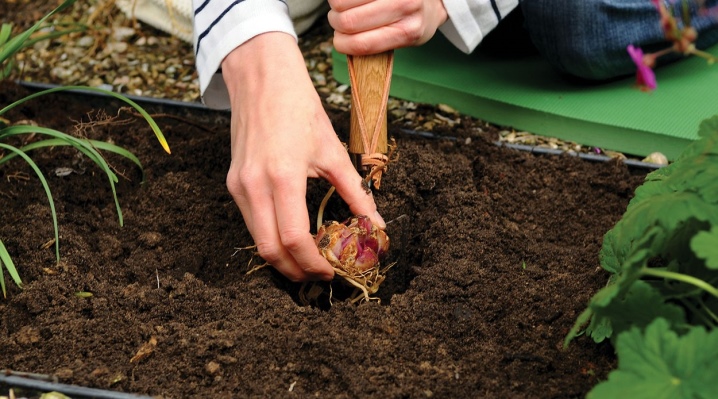
In any case, if this is the case, there is no need to abandon the spring planting and wait for the next season. In addition, this option has obvious advantages, namely:
- not all bulbs planted in the fall will necessarily root and sprout in the spring - they can freeze or suffer from rot, pests, which can happen despite good protection and insulation of the flower bed; in artificially created conditions with low temperature, darkening and humidity (for example, in a refrigerator or cellar), bulbs are stored better and their condition can be monitored;
- there are varieties of lilies for which wintering in the open field is contraindicated; especially when it comes to areas with a harsh climate;
- no need to waste time and effort on warming the beds, and then with the onset of heat - on clearing.

Along with this, difficulties may arise. If the bulb is not sufficiently developed, then flowering may be weak, and in some cases there are no buds at all. For the same reason, the number of children is decreasing. All of these consequences can be exacerbated if the summer was cold.
Planting work should be carried out in late April or early May, when the soil warms up quite a bit and there will be no severe frosts. In the south, you can start earlier, and later in the northern and Siberian regions.
The choice of planting material
The most common breeding method for lilies is with bulbs. It is necessary to pay attention to their type when purchasing. Lilies are as follows:
- annuals - the bulb loses all its properties at the end of the season, gives a new (daughter);
- perennial - the bulb is replenished with new scales every season, in five seasons they almost double; in addition, they become overgrown with tiny baby onions - they will have to grow for at least two years before getting flowers.
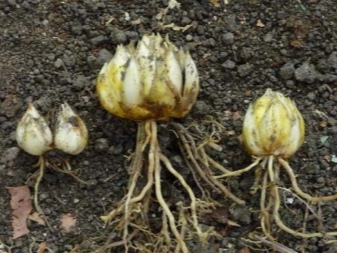
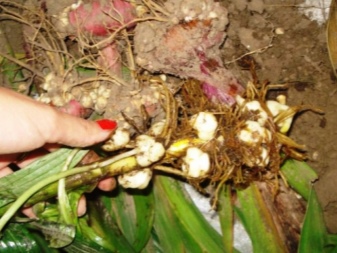
When choosing, it is important to pay attention to the size, density and appearance of the bulb. It should be proportionally heavy and firm. When pressed, the surface should not miss. Cuts, cracks, foul odor, oozing fluid, and any questionable surface stains should be an excuse to not purchase. A good condition of the bottom with living roots is the key to the health of the future plant.Particular attention should be paid to the sprout, if the bulbs are purchased in advance, any signs of germination should be absent, otherwise it will not be possible to meet the deadline and you will have to grow the flower at home.
For spring planting, you need to purchase bulbs in late summer or early autumn. It is better to spend some effort in storage during the winter period than to buy low-quality material. Sometimes in the spring, unscrupulous suppliers can slip the bulbs after forcing - if they are planted in the same season, then the flowers will no longer be obtained.
Specialty horticultural stores are not a guarantee, but they inspire more confidence. In addition, they can immediately purchase everything you need for planting and care, as well as get advice.

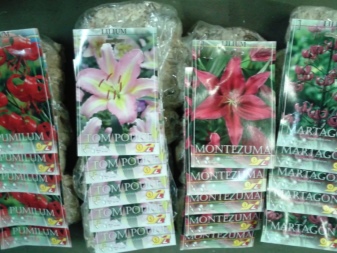
It is no secret that the size and proportions of the flower will depend on the quality of the planting material. The best option is to prepare it yourself. The preparation of the bulbs takes place in several stages, namely:
- first, the nest, that is, the mother's bulb and babies, must be carefully removed; usually the babies separate well themselves, but if this does not happen, it is better to leave them on an adult bulb - to ripen;
- then all the bulbs are cleaned of the earth, old dead scales, roots are removed and allowed to dry (but not under the sun);
- the finished planting material is laid out, signed - ventilated bags or boxes are suitable for this (it is preferable to lay out so that the bulbs do not touch); they are stored in a cool, dark place with sufficient moisture to prevent them from drying out; this process must be monitored and decayed must be removed in time;
- before planting, the prepared material is taken out, inspected for damage - be sure to treat them with a weak solution of manganese or fungicides; do not neglect this procedure - this way you can prevent some diseases.
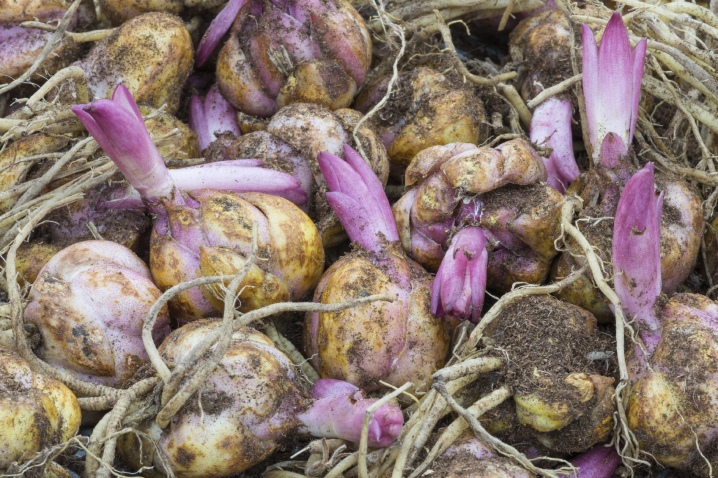
Bulbs with sprouts are suitable for spring planting. It is impossible to save them until autumn. Often this happens due to non-observance of the terms or conditions of storage of the seed. If there are more than two months left until May, and the sprouts are already quite large, it is easier to plant the bulbs in pots or containers. For planting at home, containers should have fairly high sides. Sprouted lilies are planted later, so that the delicate sprouts are guaranteed not to be damaged by natural troubles. They are removed with all possible care from the containers and lowered into suitable holes.
How to prepare the soil?
First you need to choose a place for the future flower bed. For lilies, a flat area is suitable, on which moisture does not accumulate. Despite the fact that this type of flowers loves sunlight, plantings should be fairly well protected from the wind.
The fact is that the stem and leaves are tender, easily bend and break. For protection, you can use a fence or shrubs. At the same time, the flower bed should not be in the shade, therefore, plantings or buildings should be located at a sufficient distance.
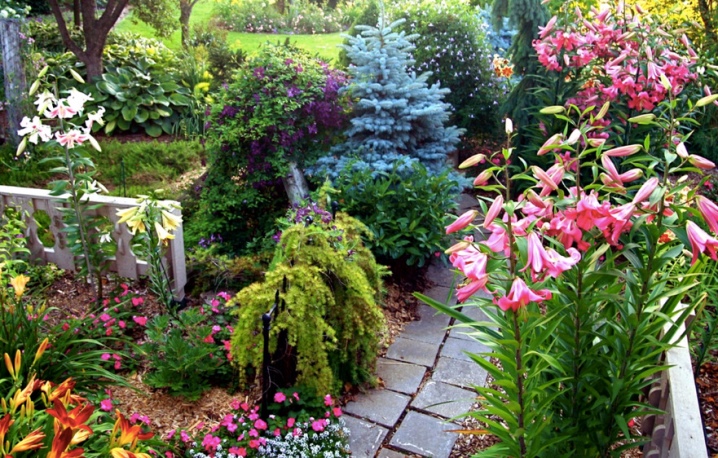
After the planting sites have been identified, the condition of the soil should be assessed on them. It is believed that in order to grow lilies, it must be fairly light and well-drained. But at the same time, it is important to maintain a balance, because in the sandy soil there will not be enough moisture for the development of the plant, and in heavy clay soil it will accumulate unnecessarily and can lead to decay. In addition, excess clay interferes with oxygen exchange with the roots, and this can negatively affect the growth of the flower. Therefore, it is necessary to rely on the condition of the soil, as well as on previous experience with planting in this place. If necessary, peat and humus can be added to the sandy soil mixture, and the clay soil can be diluted with a mixture of peat and sand.
Important! By eye, the desired consistency is determined as follows - the earth compressed in the hand should remain crumbly. If it forms a dense lump, then it contains many clay components.
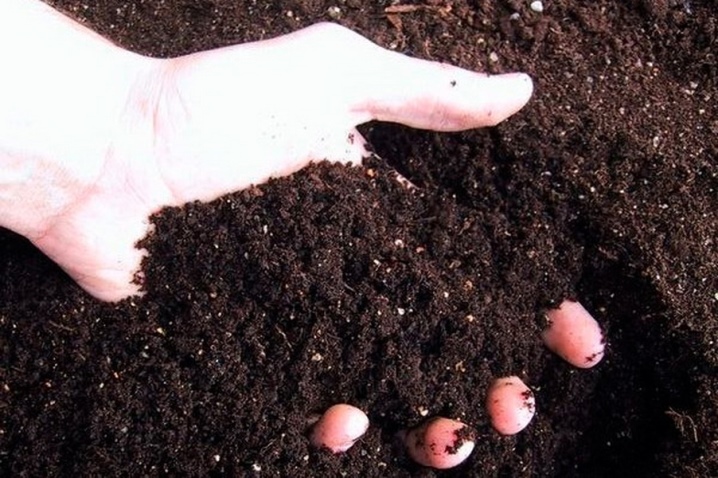
If we are talking about a place where water constantly accumulates or groundwater is located nearby, it is imperative to pour a drainage layer on the bottom of the planting holes. It can be expanded clay, pebbles and even broken brick, slate. Most lily varieties prefer slightly acidic soil. To bring this indicator to the desired level, sifted ash, crushed eggshells or slaked lime are added to the soil. Strongly alkaline soil can be adjusted with manure, superphosphate, or ammonium sulfate.
Ideally, if a fairly large-scale planting is planned and the place is determined in advance, then you should start preparing the soil in the previous year. It should be dug up and humus added (but not fresh). Besides, on the site of the future flower bed, green manure can be sown, which will improve the structure of the soil, enrich it with nitrogen and prevent the growth of weeds... The main work will begin 2-3 weeks before planting the bulbs, when the soil is still moist. The selected area must be cleaned of leaves, dead wood, extraneous shoots, leveled and distributed over it the necessary components - sand, peat or humus. Then all this is well dug up (to a depth of at least 20 cm). Mineral fertilizers at this stage should be limited, since their excess can lead to excessive growth of greenery and a decrease in the number of buds.
Important! Lilies can be used to decorate even seemingly unsuitable areas for planting, for example, stony ones. In this case, holes or deep holes should be dug on it and filled with suitable soil, which will have to be renewed every two or three seasons. In order for the flowers to develop well with this arrangement, constant monitoring and good care are necessary.
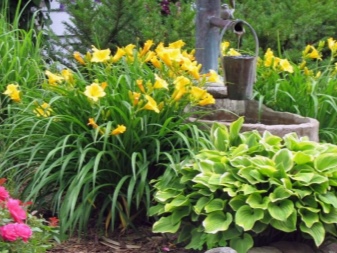

Disembarkation scheme
After the bulbs have been prepared, they can be safely planted in the ground. For this, it is better to prepare individual dimples or long holes. If the ground is too dry, they can be slightly moistened. At the bottom of each, a drainage layer should be poured, at least from sand. Top dressing is added directly to the pits. Then, in them strictly vertically, with the bottom down, set the onions and cover them with earth from above.
Planting density and density may vary. Lilies are almost never planted alone; in groups they look more organic. A flower bed with often planted flowers looks better, but in this case, perennials will have to be transplanted more often, as they grow larger and the children grow. Better to keep the distance between the bulbs the same (5 to 25 cm), especially for linear planting.
The gaps between the rows should be sufficient not only for the development of the plant, but also for the convenience of caring for it.

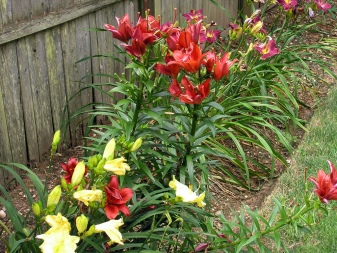
Another aspect that raises many questions is the planting depth. On this score, one can come across completely different opinions. It depends on the following factors:
- variety - undersized ones are buried by 10–12 cm, lilies of medium height - by 15 cm, tall ones - by 20–25 cm; there are certain varieties with low-leafed leaves - it is enough to sprinkle them only slightly with earth;
- the size of the bulb - if it is small, then the depth can be reduced;
- the selected area - in loose, soft soil, the pits should be deeper, this method is more reliable and retains moisture better, especially when it comes to arid regions, but this may slightly delay the timing of germination and flowering.

Naturally, the landing should not be spontaneous. There are many ideas for decorating flower beds, but they are all subject to the following principles:
- it is important to choose a good background for lilies - it can be a fern, juniper or any other shrub of this kind, while high varieties do not look at all against the background of low and rare plantings - they will stand out excessively; on a rounded flower garden, they are usually located in the central part;
- undersized lilies will perfectly fit into any flower bed, and are also suitable for decorating paths, highlighting zones on a personal plot;
- so that the flower garden always looks elegant, next to them you can plant flowers that bloom at different times, for example, phlox, peonies and gladioli;
- in addition to the size of the plant and the shape of the flower, you should carefully choose the color scheme - flowers can contrast with others or emphasize similar shades;
- when distributing space for different types of flowers, it is necessary to make sure that the faded ones are at least partially covered by other plants;
- different varieties of lilies are planted together with great care, as they may have different conditions of detention, and this will also prevent the spread of diseases from the most vulnerable varieties.
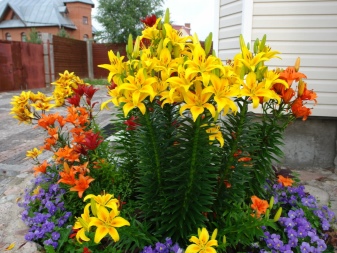

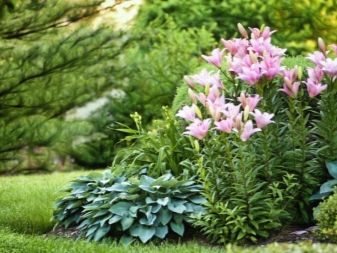
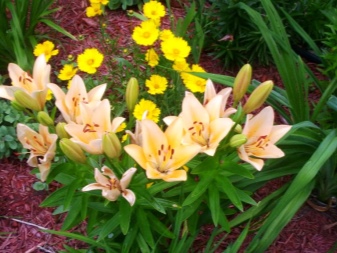
Follow-up care
Lilies are not capricious flowers. But they still need proper care. Of course, perennials, under favorable conditions, will sprout themselves and bloom, even if watering is limited to rain. But the flowers will be small and will gradually degenerate. In addition, without proper care, the plant becomes the most vulnerable to various diseases and pests.
Lilies should be watered as needed. During the hot period - daily in the morning and in the evening. The stream of water should be directed at the root so that it does not touch greens or flowers. In addition, the beds should be weeded periodically and the row spacings should be loosened carefully to ensure good air exchange. Cut the lilies at an angle, leaving the stem of sufficient height to allow the bulb to develop further.
After the end of the growing season, all stems and leaves are removed. Perennials that are resistant to cold need not be dug out, only covered with mulch for the winter.
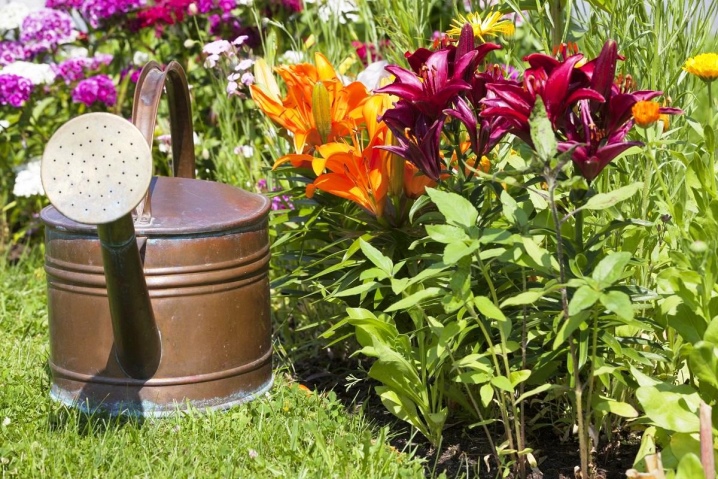
Fertilizers should be applied carefully and as needed. Usually only the lilies that have emerged are the most vulnerable. To make them stronger, you can use any means intended specifically for this group of flowers, as well as humus, saltpeter, urea. Then support will be needed during the budding and flowering period.
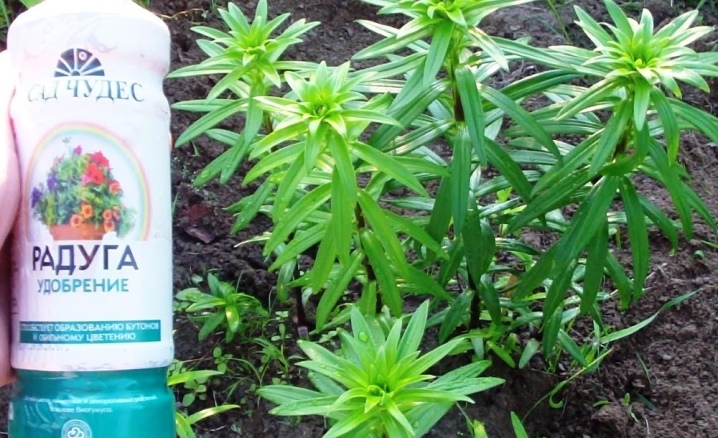
It often happens that even if all the conditions are met, the flowers do not grow well or do not look good enough. Consider what can harm the lilies.
- Infections (rot, penicillosis, rust). The causative agents of such diseases can be found both in soil and in water. They can be prevented by pre-processing the planting material. To fight an already onset disease, you should use copper sulfate, the affected leaves are sprayed with fungicides.
- Viral diseases (rosette, mosaic, and so on). Most often they are carried by pests or insects. In this case, the modified plants are removed along with the bulbs.
- Unfavourable conditions. Leaves can often turn yellow due to the acidity of the soil. Sometimes a seemingly healthy bulb may not sprout or, for some unknown reason, the stems of the plant grow together. Usually, all this takes place the next year or when the properties of the soil, illumination, aeration change.
- Bulbs are often heavily affected by rodents. Especially if they are planted in the fall and covered with straw, in which they live. Spring planting eliminates the need for insulation, and the rodents disappear.
For information on how to plant lilies in the spring in open ground, see the next video.







































































































I planted lily bulbs according to your recommendations. I hope for a positive result. Thank you for the article.
The comment was sent successfully.